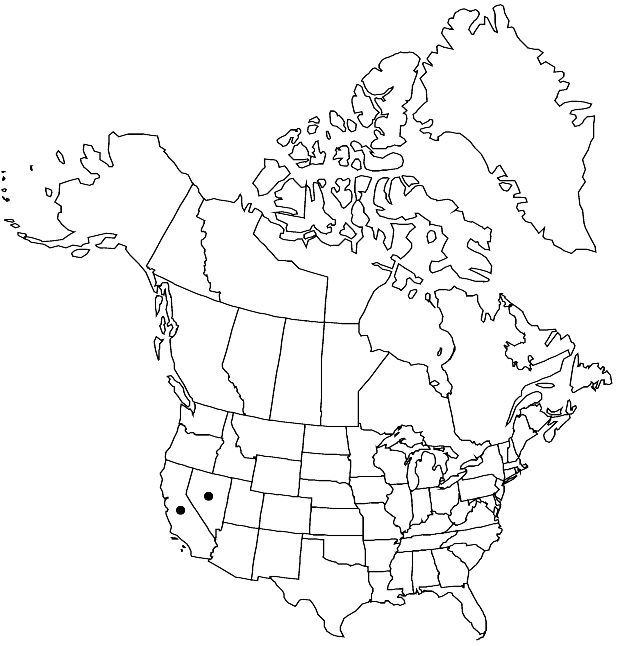Caulanthus glaucus
Proc. Amer. Acad. Arts 17: 364. 1882.
Perennials; glabrous throughout. Stems erect or ascending, unbranched or branched distally, 3–12 dm. Basal leaves not rosulate; petiole 1–8 cm; blade broadly obovate or oblong to elliptic, 2–10 cm × 20–120 mm, margins usually entire, rarely coarsely dentate-sinuate. Cauline leaves (distalmost) shortly petiolate; blade lanceolate to linear, 1–3.5 cm × 3–10 mm, margins entire. Racemes (densely flowered), without a terminal cluster of sterile flowers. Fruiting pedicels ascending, 5–35 mm. Flowers: sepals erect, (purplish or green to yellowish green), lanceolate, 7–12 × 2–3 mm (equal); petals purple or yellowish green, (not or faintly veined),11–17.5 mm, blade 3–6 × 1.8–2.7 mm, not crisped, claw narrowly oblong to narrowly oblanceolate, 8–12 × 3–4 mm; filaments tetradynamous, median pairs 3.5–8 mm, lateral pair 2–7 mm; anthers narrowly oblong, equal, 3.5–4.5 mm. Fruits divaricate to ascending (often distinctly curved), terete, 4.5–15.5 cm × 1–1.6 mm; valves obscurely veined; ovules 180–210 per ovary; style 0.2–1 mm; stigma strongly 2-lobed (lobes 0.9–1.5 mm, connivent, opposite replum). Seeds 1–2 × 0.8–1.2 mm. 2n = 20.
Phenology: Flowering Apr–Jun.
Habitat: Sagebrush scrub, dry slopes and rocky outcrops
Elevation: 1500-2400 m
Distribution

Calif., Nev.
Discussion
Of conservation concern.
Caulanthus glaucus is known in California from Inyo and Mono counties and in Nevada from Esmeralda, Mineral, and Nye counties.
Selected References
None.